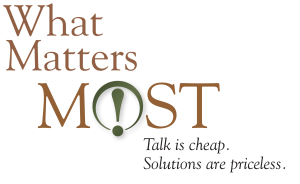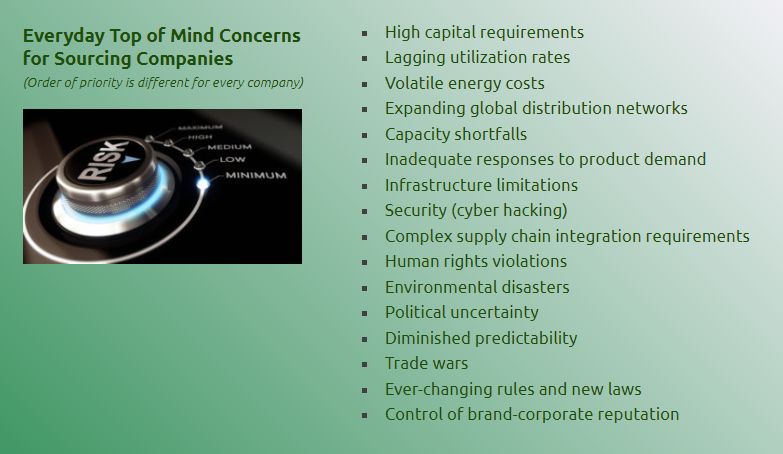Making the Smart Business Case: Supply Chain ESG and the New Competitive Advantage
Art Stewart, MPM
Managing Partner
(September 2, 2019.)
After decades of advocating for the supremacy of shareholder interests, this August the Business Roundtable came to a consensus on a bold 300-word statement recasting the purpose of the American corporation.
As an association of nearly 200 CEOs representing America’s most prominent companies, the declaration is significant and falls on the heels of other influencing bodies that have redefined their position regarding the role of business in the larger context of societal obligations.
 The Roundtable cited creating value for customers, investing in employees as well as fostering diversity and inclusion as three key foci but it was the other three that particularly relate to the supply chain: “dealing fairly and ethically with suppliers,” “supporting the communities in which we work,” and “protecting the environment.”
The Roundtable cited creating value for customers, investing in employees as well as fostering diversity and inclusion as three key foci but it was the other three that particularly relate to the supply chain: “dealing fairly and ethically with suppliers,” “supporting the communities in which we work,” and “protecting the environment.”
Clearly the glacier of collective CEO leadership on public interest concerns has moved. The days of marginalizing ‘responsible’ business practices as “nice to have” add-ons or standalone window dressing are over.
Why This Matters Now
Whether you’re a major sourcing company, one of its preferred suppliers or aspire to be, complying with the rigorous standards of supply chain operations now is daunting. Everyone faces a significant undertaking to fully grasp the myriad of concerns involved: From human resources (e.g., equal opportunity, worker rights); environment, health and occupational safety; and advertising standards to consumer rights and protections; product safety and labeling; and business development (sales).
Sourcing company executives and their functional managers are increasingly expected to operationalize policies to meet stakeholder expectations and improve corporate integrity while concurrently ensuring top- and bottom-line growth. Without skipping a beat, they also require their suppliers to be upfront in their dealings with the company, its auditors and audit programs as well as other third parties.
Suppliers are expected to take ownership of their relationships with the facilities that produce the products that their sourcing customers buy from them, which results in a cascading of corporate values throughout the supply chains.
Given that up to 80 percent of a sourcing company’s operations can interact with a supply chain, management of end-to-end supply chain operations has become a way for them to limit risks to their products and services while also controlling brand reputation with customers.
 Companies are actively acquiring hundreds of thousands of data points across the supplier universe, cradle to grave, as they invest in technologies that are enabling them to better track, monitor and forecast their risks. It’s much easier to look deeper into a supplier’s corporate structure and the direct behavior of its owners as visibility now extends to the unstructured data of social media and mobile apps. Certain requirements are more often being imposed on all supplier relationships as a result of unrelated mishaps involving just one supplier that may have affected a sourcing company’s overall risk strategy.
Companies are actively acquiring hundreds of thousands of data points across the supplier universe, cradle to grave, as they invest in technologies that are enabling them to better track, monitor and forecast their risks. It’s much easier to look deeper into a supplier’s corporate structure and the direct behavior of its owners as visibility now extends to the unstructured data of social media and mobile apps. Certain requirements are more often being imposed on all supplier relationships as a result of unrelated mishaps involving just one supplier that may have affected a sourcing company’s overall risk strategy.
Regulatory and advisory bodies are transitioning to the next generation of standards and requirements, modernizing their monitoring capabilities and increasing enforcement activity. Regulations from one country to another are getting more complex and contradictory, creating a minefield for supplier contracts.
Consumers are hyper aware of where their products come from and are holding both sourcing companies and their suppliers directly responsible for improving circumstances throughout the supply chain. Employees share these concerns and in a full-employment economy, the most attractive candidates will only work for a preferred employer brand.
Even shareholders are re-balancing their expectations for stock performance with a recognition of the correlation between ethical practices and lower financial risk. The growing number of proxy actions involving ESG issues is but one indicator of this changed understanding.
A new normal of radical transparency and accountability is bringing technology-driven visibility of everything to everyone across supply networks.
Never-the-less, organizations are still getting trapped in a loop of self-limitation which may become dangerous. Problematic factors that are characteristic of the overall organization culture can metastasize as bigger threats in the intense context of supply chain operations. These include: A hierarchical management framework, fear of any kind, decision bias, a reliance on centralization, inflexible business practices and rigid structures, skills deficits, short-term thinking and acting, insufficient experimentation or even resistance to innovation, and a lack of clarity on and commitment to purpose.
The business case for Supply Chain ESG as the new pathway to strategic competitive advantage has become self-evident. How will your organization capture the opportunity that is before you? SIP


